"Obon (お盆) or just Bon (盆) is a Japanese Buddhist custom to honor the departed (deceased) spirits of one's ancestors. This Buddhist custom has evolved into a family reunion holiday during which people return to ancestral family places and visit and clean their ancestors' graves, and when the spirits of ancestors are supposed to revisit the household altars. It has been celebrated in Japan for more than 500 years and traditionally includes a dance, known as Bon-Odori." - Taken from Wiki.
Families enjoy performances on stage.
This is a world-wide custom by others but are known by different names and have a branches of practices. The commonly known name for it is The Qing Ming Festival (清明節). In Malaysia, some of us call it 'Ching Bing', which I would presume is Hokkien.
In Malaysia, it is known as the Japanese Bon-Odori festival and is held usually around Selangor (Shah Alam) and Penang usually following the Japanese summer months. For many years in Malaysia, the Bon-Odori has gotten much rave due to the fact that for the longest time, many Malaysians have a Japanese fetish and till this day, still burns strongly. The ignorance of the meaning to this celebration is really daunting even with all the interest that is spurred, yet it has not phased anyone yet as outside interest is always much obliged. The reason for this is because, rather than a celebration of the Buddhist practice, it is more of an exposure of the Japanese culture to promote interest and awareness. As you may have guess, Malaysian is a Muslin country with constant shifting moral borders. At these festivals in Malaysia, you are prohibited to wear high heels in the dancing field (understandable as you may step on someone), no smoking excepts in designated areas (Fuck yeah!) and not to wear anything impolite or offensive such as goth lolitas (seriously?) and NO cosplaying (As the older Japanese were offended when hordes of Malaysian cosplayers who showed up before). ;)
Pika! Pika!
In Melbourne, it was promoted as a Japanese Summer Festival, aka Melbourne Japanese Obon Festival, and is held at Docklands towards the end of the summer. Online resources seem to be very scarce and vague pertaining to this event, which is very disappointing. It was held at Docklands this year and thousands of people flock over to enjoy a nice day out as the summer draws to an end.
"Bon Odori (盆踊り, meaning simply Bon dance) (August 1st) is an event held during Obon. It is celebrated as a reminder of the gratefulness one should feel toward one's ancestors.
"Originally a Nenbutsu folk dance to express the effusive welcome for the spirits of the dead, the style of celebration varies in many aspects from region to region. Each region has a respective local Bon dance, as well as different music accompanying the dance. The music can be songs specifically pertinent to the spiritual message of Obon, or local min'yo folk songs." - Taken from Wiki.
"Originally a Nenbutsu folk dance to express the effusive welcome for the spirits of the dead, the style of celebration varies in many aspects from region to region. Each region has a respective local Bon dance, as well as different music accompanying the dance. The music can be songs specifically pertinent to the spiritual message of Obon, or local min'yo folk songs." - Taken from Wiki.
Scattered through the intervals of the Bon-Odori Dances are performances by Japanese primary and secondary schools and various Japanese performance groups.
A lovely lady playing a Shamisen between the numerous food stalls.
"The shamisen or samisen (Japanese: 三味線, literally "three flavor strings"), also called sangen (literally "three strings") is a three-stringed musical instrument played with a plectrum called a bachi." - Taken from Wiki.
I find oriental traditional music instruments very attractive. The subtle yet defining plucking of the strings and emotions brought out by the melodies is highly mesmerising.
Anyway, the focus of many of the photog-s present were to shoot the kids. =) As this would be my very first attempt in shooting kids whom I have never met, I was hoping to at least be able to have gotten better shots. I wonder what would their parents think of as a random person keeps pointing their camera at their kids. I know for one thing that Americans are HIGHLY paranoid over such matters and it apparently is illegal in the US. I can understand why though.
Matching yo-yo balloon.
"Yo-yo balloons are a common type of water balloon found at matsuri festivals in Japan. Typically small, round, and colourful, the balloons are filled with 1/10 of water and hung from a rubber band. This gives them enough weight and bounce to function as a yo-yo, earning them their name. The balloons are often won in a game (Yo-yo Tsuri or just yo-yo) where they are set floating in a tub of water, with an elastic band and a paper clip affixed to one end. Players "fish" for the balloons with another paper clip attached to another rubber band, or (more commonly), a twisted "line" of paper, which they then try to hook through the paper clip of the desired balloon. As the paper line breaks easily, the game is often likened to goldfish scooping in terms of difficulty." Taken from Wiki.
Ganbatte!
Cheering for a performance on the stage.
To wrap it up, overall it was a fun and cloudy day. There were very few stalls and each were specialised in selling very specific items and trinkets. Perhaps this was organised in such a way where there would be no overlapping in stores selling similar items and food and able to cover a broad base of items related to the Japanese culture.
Although people would just crowd around the stalls selling trinkets, the lines for the food stalls were very very long that it discourages people like me to even bother queuing up. For those of you who would be interested in finding out the quality of food at fairs, my advice would be to go with a full stomach and bring bottles of water ;)
Photo-talk now.
From this shoot, I finally understand why photog can survive with just the holy trinity. I have tested a few lenses that I have with me and I must say, they are a little too specialised such as the fisy eye and 50mm. Throughout the shoot, I didn't really need my flash as it got dark around 2030 usually during the summer months. The stage had it's own lights and and there wasn't any sun to contend with as it was just cloudy. For dealing with shadows under low light, I just bump up the ISO up to 1600 and the illumination of darker areas turned out satisfying.
As a general tip of trying to take pictures of a person singled out from a crowd, it is best to shoot at a larger aperture to get a bokeh (Boke, in Japanese). The reason to this is simply because of the clutter and mess that a crowd of people can create in a shot. This bring focus onto the subject and make it pop extremely easy and makes it easy in selecting shots to put up.
On a note on the lenses, the 70-200mm is a godsend in situations that forces you to shoot from afar and the 17-35mm, although it is my all time favourite, it basically just excellent for a wide angle lense. On an FX camera, the 17-35mm can replace the fisheye when travelling (to reduce the number of lenses carried) just because of it's versatility. If you can move your legs, 17-35mm rocks.
Photo info: Nikon D700. 17-35mm f/2.8, 70-200mm f/2.8. Hand-held. No flash. Lighting is mostly cloudy in the evening.
Ciao!
Stout out.

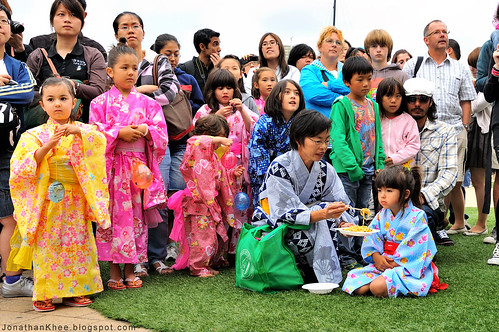
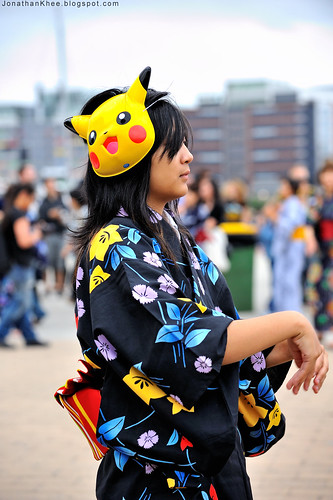
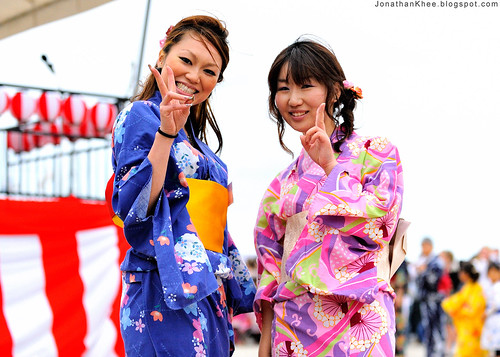

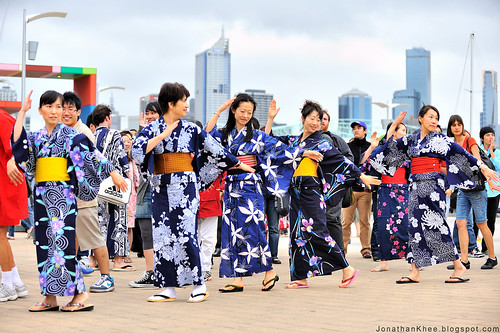

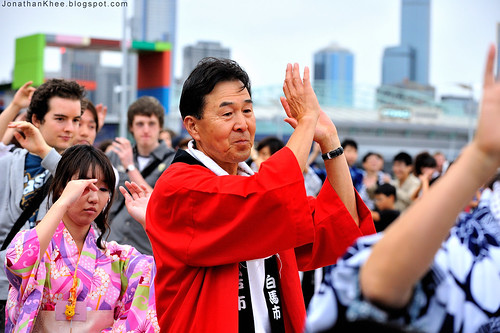

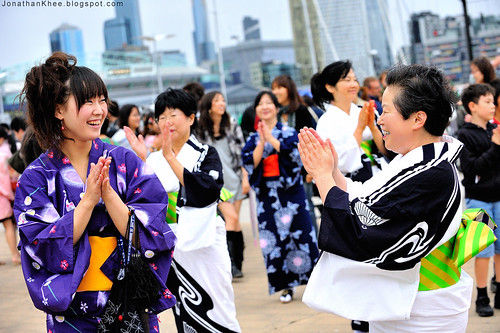



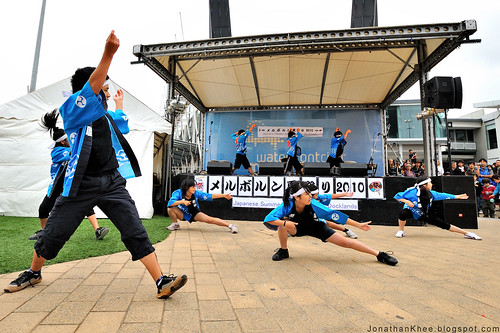
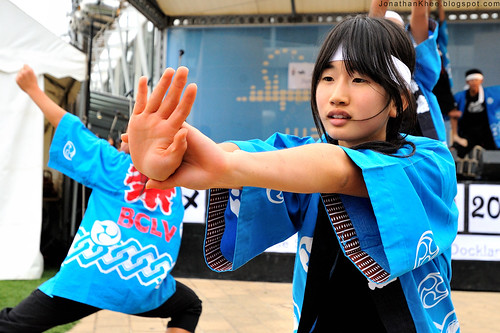

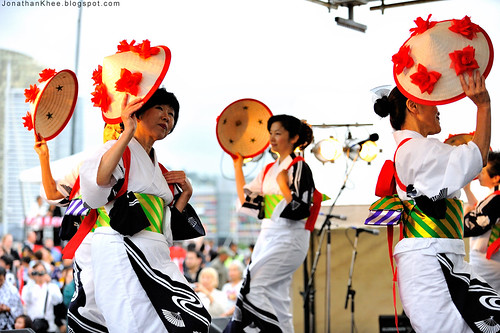
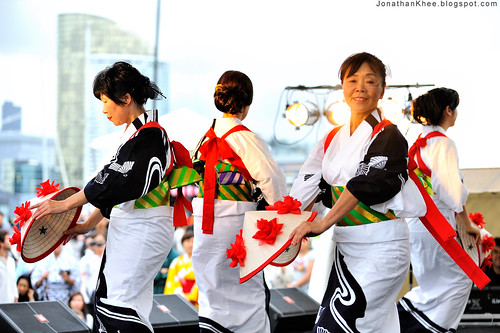

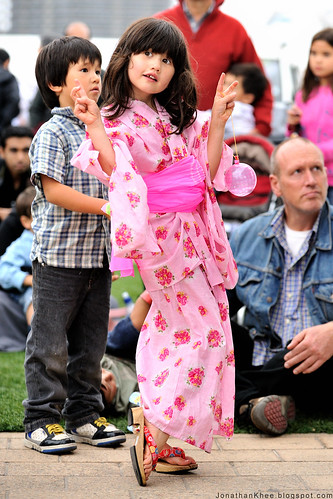
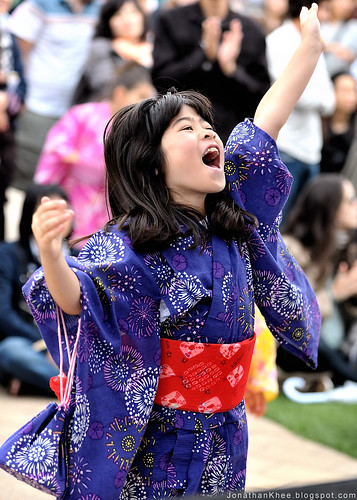
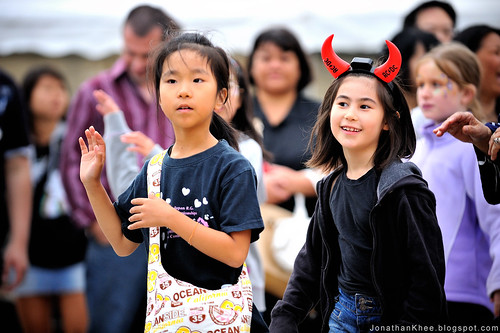
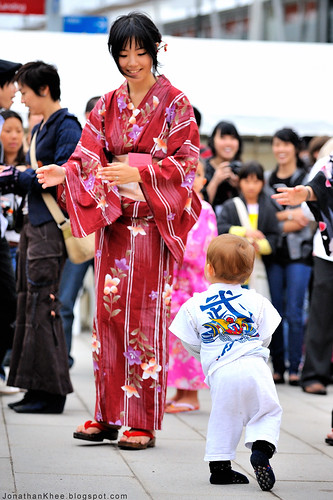
Where do you take this picture? Its really nice.
ReplyDelete